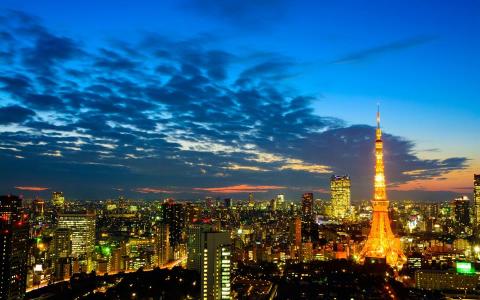
(Forbes) It’s been a medal-caliber few years for Japan’s property developers.
Not Olympic gold of the kind Tokyo will award athletes 12 months from now. But construction ahead of the 2020 Games, building that’s been a godsend for Japan’s property developers. That will happen when the cost of staging a few weeks of sporting events explode to $25 billion from the $7 billion Tokyo originally estimated.
What if, though, the 2020 construction boom spells trouble for the century ahead? The reference here is to the “Skyscraper Curse” that may be rearing its head in the third-biggest economy.
Building related to Tokyo 2020 turned the Japanese capital into a giant construction site. Even developers unattached to the August 2020 Olympics have used the excitement to build new office towers throughout the city. Office space that, frankly, might have a hard time renting out floors two years from now.
Multinational companies, after all, continue to favor Singapore and Hong Kong (for now, at least) for Asian headquarters. And it’s not Shinzo Abe’s seven-year reflation scheme is catalyzing a startup boom to fill all that office space once the five-ring Olympic circus leaves town.
Mori Building recently unveiled ambitious plans to construct Japan’s tallest skyscraper, a title suddenly held by Osaka. This epic redevelopment project that will include offices, residences, shops, restaurants, a hotel, and an international school will come at a cost of 580 billion yen ($5.45 billion), which surely has contractors and rivals salivating at the possibilities. But there’s reason for broader caution.
One can quibble with the wisdom of putting a 64-story, 330-meter edifice in the center of one of the world’s most seismically active metropolises. It's economic risks, though, that Prime Minister Abe’s office should be considering.
History betrays an uncanny correlation between world’s-tallest-building projects and financial crises. Roll your eyes if you want, but I’ve been covering the phenomenon for two decades. Here’s a quick recap of the last 112 years.
The Panic of 1907, when the New York Stock Exchange lost 50%, occurred just as Manhattan celebrated the opening of the 47-story Singer Building and 50-story Metropolitan Life North Building. The Great Depression that began in 1929 coincided with the New York christenings of 40 Wall Street and the Chrysler Building. Despair and homelessness spoiled the party over the 1931 opening the Empire State Building.
Fast forward four decades to New York and Chicago, the hosts to the world-topping World Trade Center and Sears Tower projects. Both opened as the Bretton Woods monetary system was breaking down and stagflation was fueling fiscal crises.
In 1997, Kuala Lumpur was quaking amid regional market turbulence just as Malaysia’s Petronas Towers came online. In the early 2000s, Taipei opened the world’s biggest architectural marvel in time for political turmoil at home and growing tensions with China, which views Taiwan as a breakaway province. The 2008 completion of Dubai’s 828-metre Burj Khalifa Tower dovetailed with the city’s bust, cascading oil prices and the “Lehman shock” a world away.
This is just the last 100 or so years of the Skyscraper Curse. Spiritualists may track the phenomenon back to the biblical Tower of Babel. But coincidence or not, it’s hard to miss the overlap between history-making economic disruptions and new architectural Guinness World Records entries.
The common, and indisputable, thread is ultra-low interest rates fueling over-investment and froth. Developers are always looking to harness the newest engineering and technological advances. That impulse gets supercharged by excess monetary expansion. It’s not surprising, then, that tallest-building projects often get green-lighted near the top-ticks of speculative manias.
Again, not the most solidly scientific of arguments. Yet Asian developers still engage in serious real-estate one-upmanship. South Korea’s tallest building, the Lotte World Tower, opened in 2017 just in time for President Park Geun-hye’s impeachment and imprisonment on bribery charges. Also in 2017, Shenzhen toasted the opening of the Ping An Finance Center, the No. 4 tallest building globally, as U.S. President Donald Trump was telegraphing his China trade war.
In Melbourne, the ongoing Australia 108 project aims to become the Southern Hemisphere’s tallest residential tower. A coincidence, maybe, but many economists worry Australia is veering toward its first recession in more than 25 years.
What about Tokyo? Abe’s seven-year revival project has been 90% monetary easing and perhaps 10% structural reform (and that’s being generous). All that liquidity, coupled with the construction boondoggle that is Tokyo 2020, has revived land prices in an otherwise deflation-traumatized economy.
As of February, the Nikkei Financial Review reported, Tokyo property prices, as measured by new condos, approached late 1980s bubble-period levels. Yet inflation is advancing just 0.6% year-on-year, less than halfway to the 2% target. And ominously, real wages are down six straight months now as Trump’s China trade war slams Japan’s export engine.
All this means the Bank of Japan’s historic easing has Tokyo construction sites buzzing with activity. The rest of the nation’s slowing economic regions, not so much. All that building is stellar news for property developers, but it’s also creating a bull market in concerns that Japan’s latest building boom could be, well, cursed.



